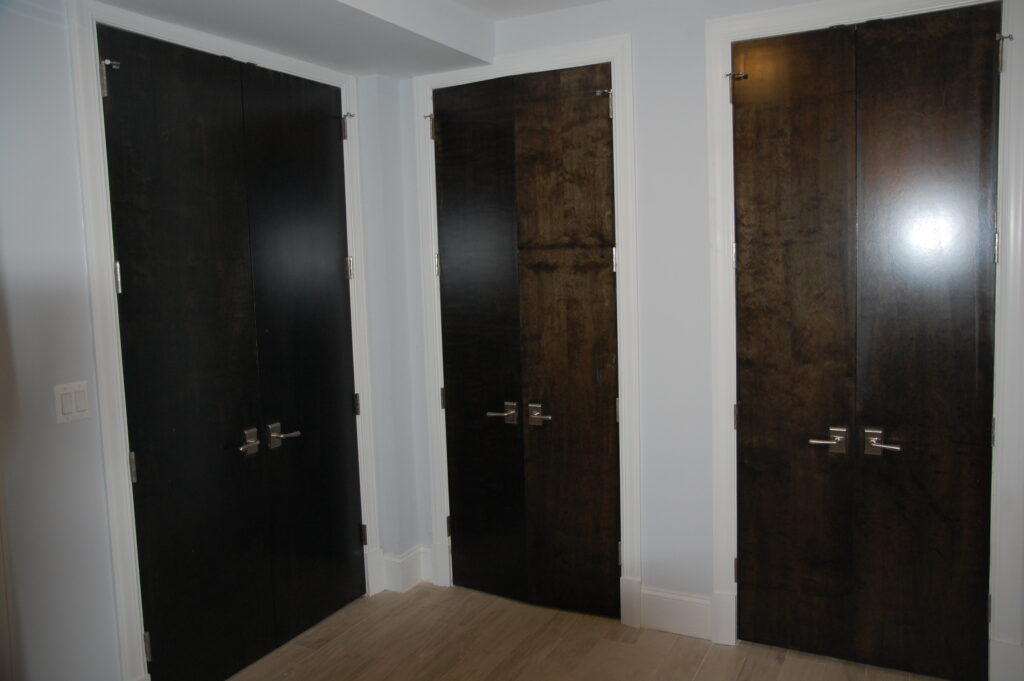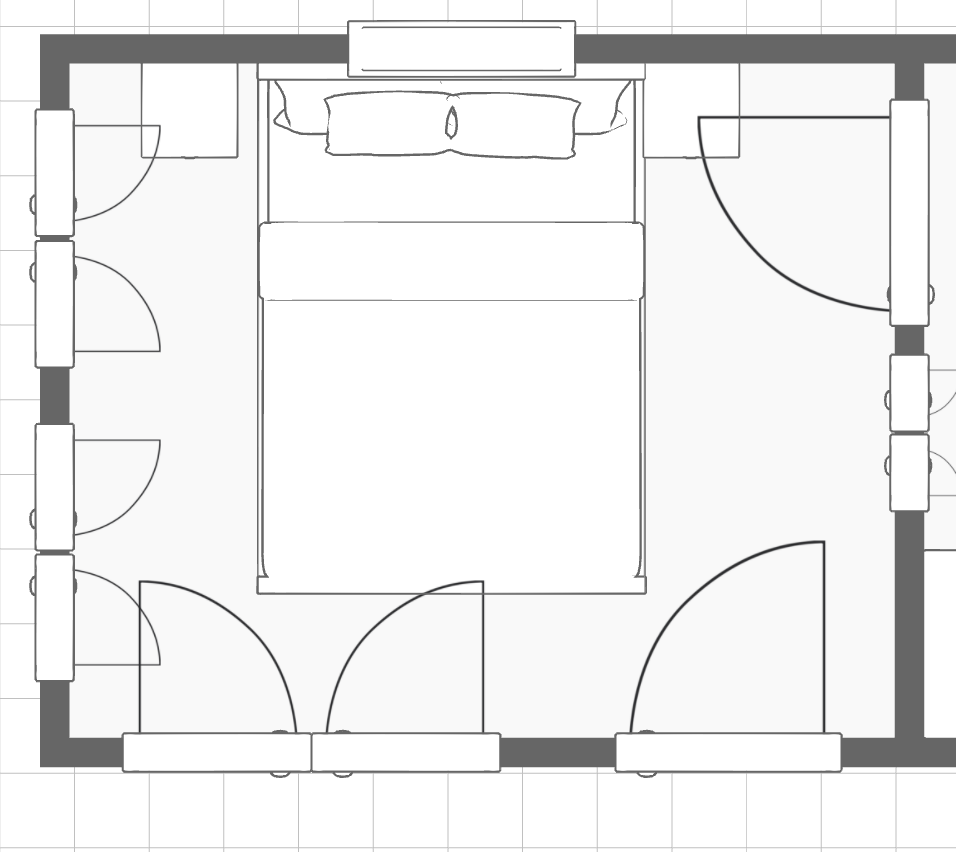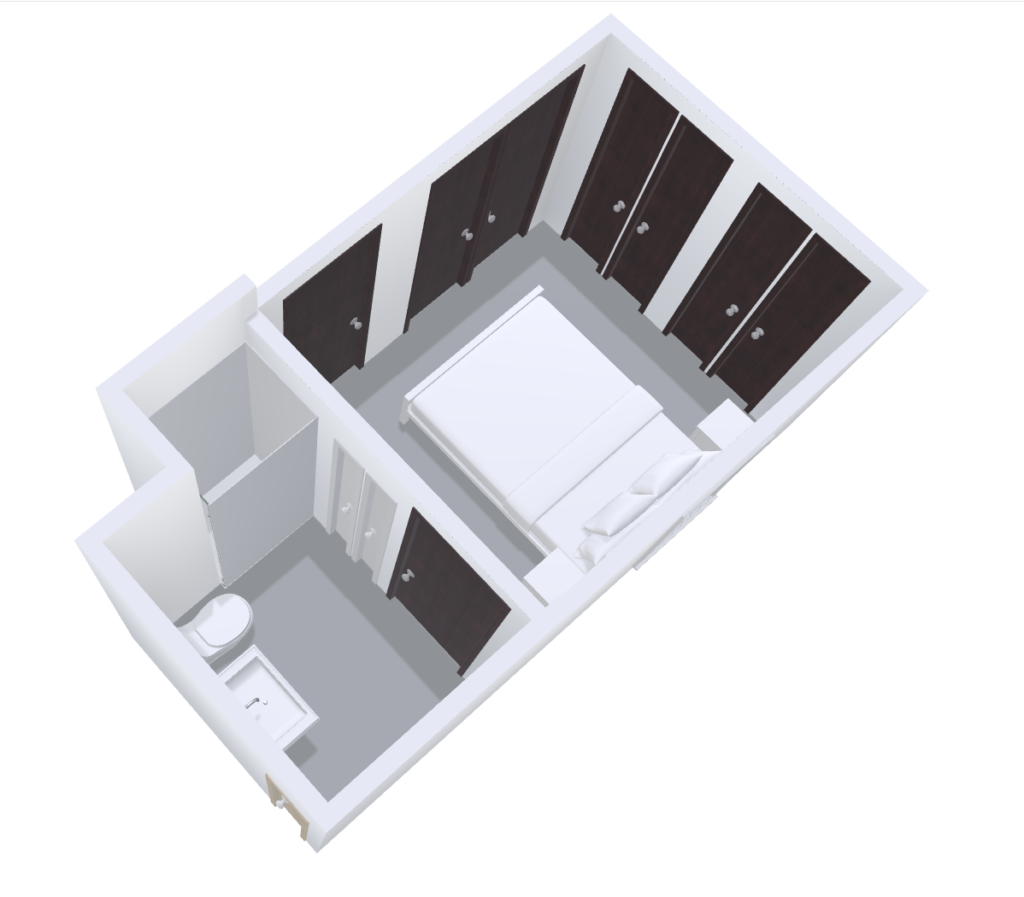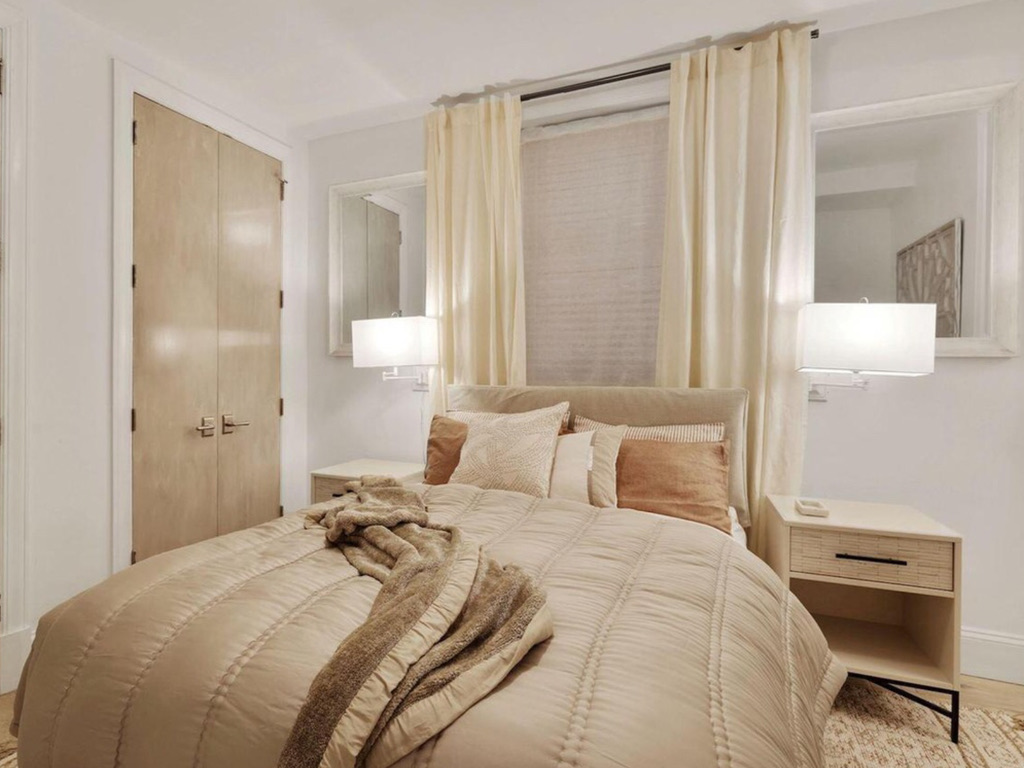New Property Purchase Finishing Surprise
Purchasing a new property pre-completion can come with surprises. Communication is key to an outcome (interior finishes and finishing details) aligned with plans. And yet, sometimes, best intentions are misinterpreted. We’re all human and the best approach to weathering this with grace is to focus on how to remedy issues.
In this case, the builder had communicated with the owner that the interior doors of this 1,000-square-foot condo would be finished in a light-white-oak-beechwood stain in a tone complementary to the floors. However, when the client arrived after the make-ready, they discovered black-stained doors throughout. The ebony tone created a tension of contrast (dark with light) that disturbed the client.


Interior Designing Space Planning Toolkit


The layout of this bedroom gave only one option for bed placement. But, designers also consider color to create a feeling of comfort in a room.
Now, don’t get me wrong – a black door can be chic, however, there were eight yes, eight doors in this tiny 9′ x 11′ bedroom. The strong repetition at intensely paced intervals was too demanding and disruptive for the scale of this space. The owner exclaimed, “It gave me nightmares. I’d wake up in the middle of the night and feel compelled to escape, but didn’t know which door to exit!”
Our solution: tone down the door contrasts, and create a finish that would provide soft depth, and reflective light, while also maintaining the bespoke, elevated look. Why? Relative scale and balance. In such a compact space where rest is the goal, tone down the vitality that contrasts create along the perimeter of the room.
We presented the client with lower-cost/higher-cost alternatives: either stay with black doors and paint the walls an intimate dark tone (green or blue) to keep within a dark tonal range, or, change the door finish and paint walls within a lighter tonal range while adding interesting textures to boost the feeling of comfort in the room. The client opted for the latter.
We sought the advice of numerous trade experts
All the wood refinishers we consulted for guidance and quotes concurred: stripping dark stained wood door panels in order to lighten the wood was one of the most complicated things to do. They assured me, there was no cost-effective or safe way to lighten doors and create a nice uniform finish because the dark stain remains in the grain despite stripping and sanding. One trade finisher suggested covering the doors in a high-quality veneer, but this would come at a significant price. Another said he would dispose of the doors (custom 9-foot fire-retardent doors) and replace them, alas, this came at an even higher cost.
Effective and Safe Solutions
The client wanted a white oak-stained door look.
With each door weighing 100 lbs, it was a bear of a job. We removed the doors, disconnected the hinges, and routed out the hardware. We stripped and sanded all of the doors in an off-site covered area (with low humidity and no prediction of rain). We created three custom stains that allowed some grain to show through but mostly had a faux wood stain look with layers of opaque tones and a high-gloss lacquer finish that would perform well against nicks and dings.
The added benefit of high-gloss lacquer: it bounces reflective light in a room. Although this was not an efficient solution (it took several days to achieve), the client was thrilled with the result and was willing to pay for the artistry and labor involved in this change.
Note of Caution: Safety first and avoid the dangers of stripping and sanding
When undertaking a paint or stain stripping project, be sure to check if the product contains methylene chloride. These products are still sold in big-box stores in the U.S. and people don’t realize the fumes of these products are heavy and drop to the ground while displacing oxygen. If you have a house pet it could die of affixation by starving it of oxygen if the space where the work is being done is not ventilated properly.
If you sand (inside the home) after stripping wood be sure to turn off the forced hot air heating system as the dust from sanding can create problems with the coils and decrease efficiency. Also, change the filters when you’re done.






